Both pre and post 1832 churches and churchyard were popular subjects for artists and photographers. The proximity of the attractively located rural village of Hornsey to London made it a popular place to come out to for its relatively clean country air. The number of depictions of both churches in all mediums is large for one in such a small village and few similar churches can have been better recorded visually. The attraction of the old Three Compasses public house, which had a garden bordering the old route of the New River, must have added to the number of visitors.
A more comprehensive list of illustrations will be added shortly.
|
Summary of principal sources for illustrations of Hornsey church and churchyard
|
|
| This summarises material on Hornsey church and churchyard which exists in the principal London collections and elsewhere. There is some overlap between the principal collections, but all have some unique material. The appeal of rural Hornsey in the late 18th and early 19th centuries encouraged many artists’ views, and the threat to demolish the old church alerted antiquarian interest. However, interest focused on the church and its contents, and convincingly accurate details of the churchyard are rare. |
| 1 |
London Guildhall collection of Prints and Drawings held at London Metropolitan Archives, Northampton St N1. Much of this is accessible online at Collage. This includes drawings by Thomas Fisher (c1781-1836) and by Thomas Gosden of monuments then inside the church, and three views of gravestones by ‘JWD’ 1883, to Richard Hinckes, Robert Lovell and Henry Stapylton Soux. Numerous prints and watercolours from 1750 onwards show the church, but have relatively little detail about the churchyard. |
| 2 |
Haringey Archives, Bruce Castle. This includes a collection of around twenty prints and drawings including versions of some of the Fisher drawings in the Guildhall collection, and around three dozen photographs of the church and churchyard dating from the later 19th century onwards. Some prints and drawings are included in the manuscript of W.Robinson’s unpublished History of Hornsey. |
| 3 |
Potter Collection, Department of Prints and Drawings, British Museum. A collection of north London material gathered in the 19th century, which includes a section on St Mary’s Hornsey, with cuttings, prints and photographs. This collection is available on line. |
| 4 |
Newport Art Gallery, Wales. Watercolour of Hornsey Church by Michaelangelo Rooker, c1790. |
| 5 |
Museum of London collections. Six watercolours of the church dating from c1825-32, two showing the old church under demolition in 1832. |
| 6 |
British Library. Drawings by John Buckler and John Chessell Buckler. Two drawings of Hornsey church, 1834 MS 36369 vol 14. Drawing by Edward John Carlos of George Rey tomb in Hornsey church, Add MSS 25706. |
| 7 |
Highgate Institute. A collection of lantern slides showing church and churchyard, made from old photographs and prints. |
| 8 |
Hornsey Historical Society, the Old Schoolhouse, Tottenham Lane N8. Photographs and postcards showing church and churchyard from the later 19th century onwards. |
| 9 |
National Monuments Record, Swindon. Photographs of the Victorian church taken in 1968 shortly before its demolition, including monuments transferred from the old church. |
| 10 |
Various published works on Middlesex and the environs of London include views of Hornsey church, (eg Brayley, Brewer and Nightingale, Topographical Description of London and Middlesex vol 5, 1816). Many of the loose prints in the collections above were also published as book illustrations.
ST MARY’S CHURCH PRIOR TO 1832
British Museum Potter Collection
            
Hornsey Historical Society Collection
  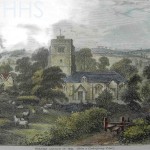
Private Collection
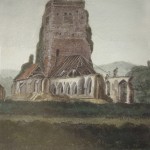 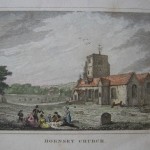 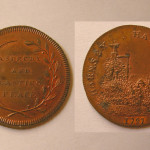 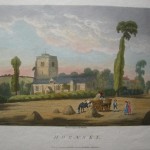 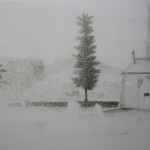
ST MARY’S CHURCH AFTER 1832
British Museum Potter Collection (©EH)
      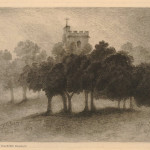 
Hornsey Historical Society
      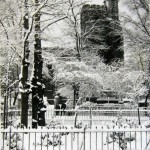 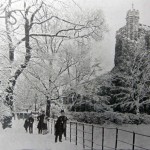    
Private Collection
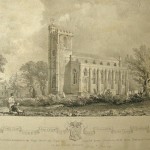 
SURROUNDING AREAS
British Museum Potter Collection (©EH)
     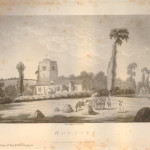 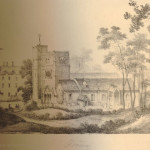 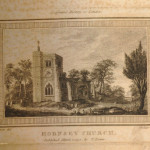        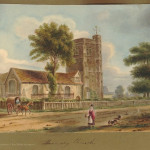 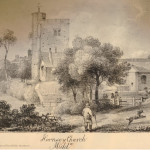 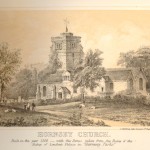 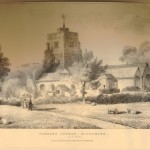  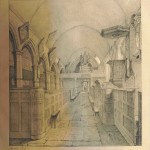
HHS Collection EH Collections
   
Private Collection
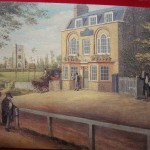  
|














































































